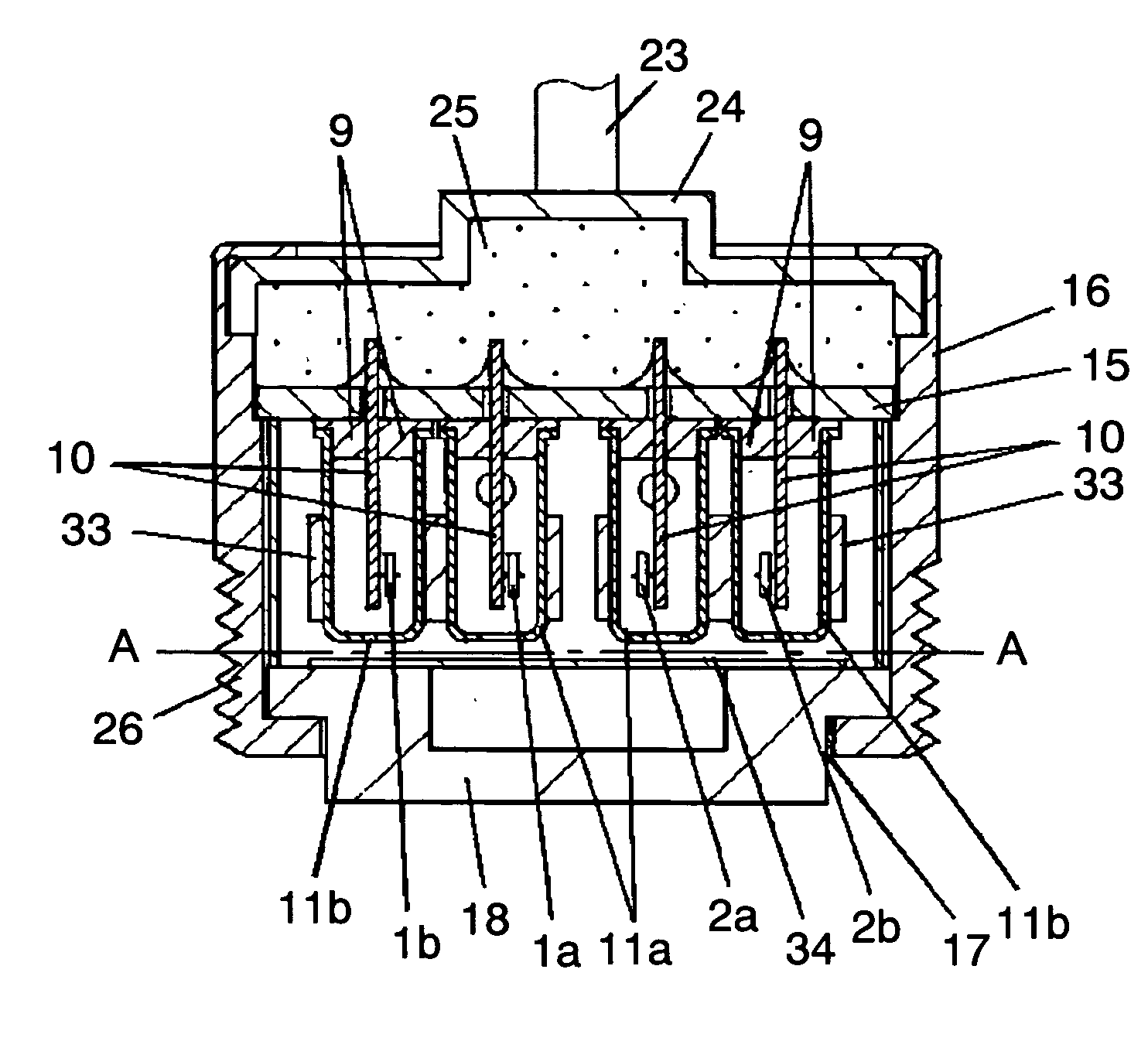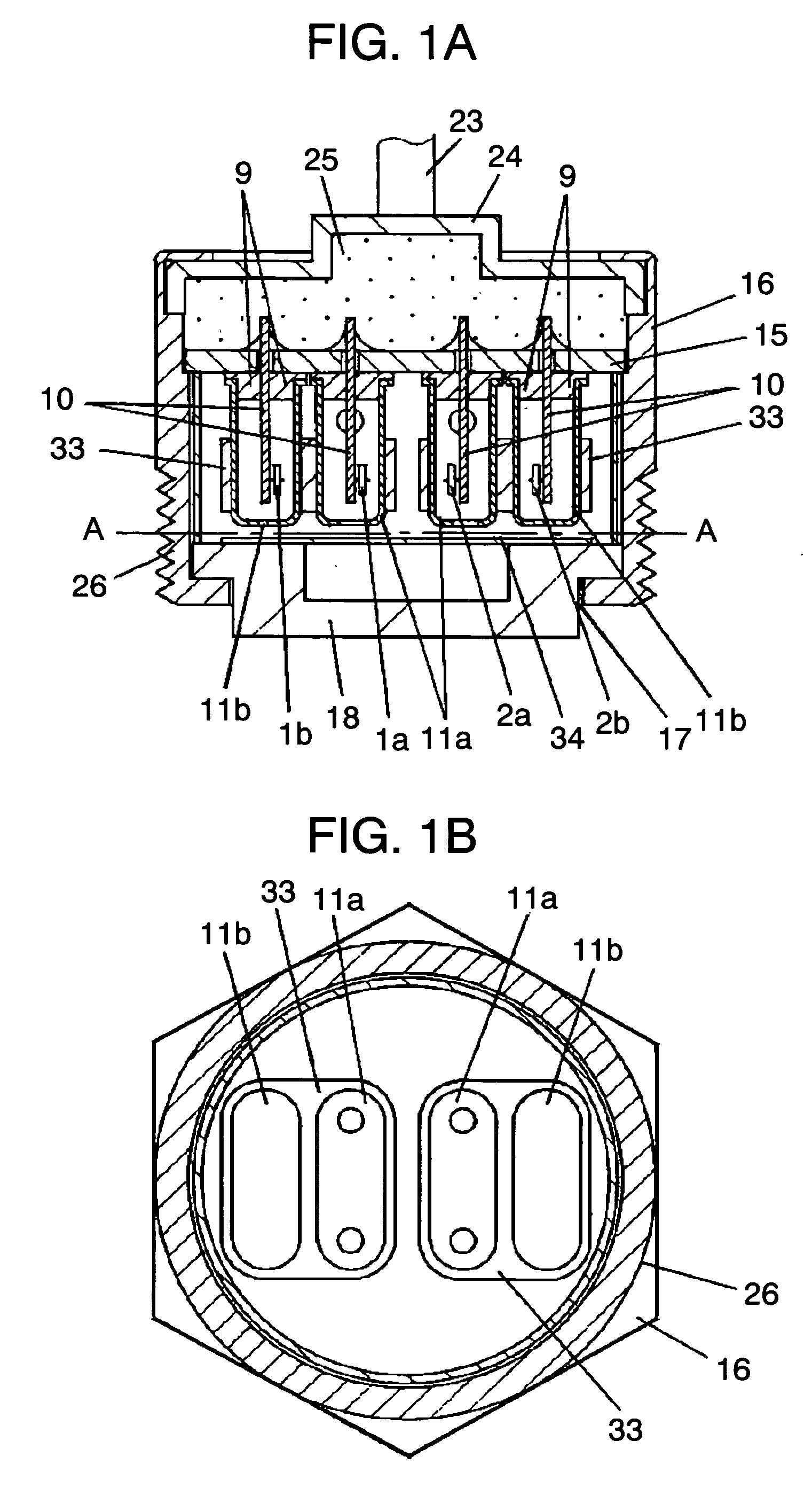Gas detector
a gas detector and detector technology, applied in the field of gas detectors, can solve the problems of losing the thermal equilibrium, changing the resistance of platinum, and gas detectors being unable to determine what caused the resistance chang
- Summary
- Abstract
- Description
- Claims
- Application Information
AI Technical Summary
Benefits of technology
Problems solved by technology
Method used
Image
Examples
first exemplary embodiment
[0031] (First Exemplary Embodiment)
[0032]FIG. 1A shows GDH 1a, TDH 1b, GDL 2a and TDL 2b. Each of these elements is composed of a thermistor, of which a structure is shown in FIG. 2. Heat generating resistors of any kind can be used as these elements, if resistances are variable responsive to temperature change. Thermistor element 4 used here is made of a sintered oxide compound composed of manganese, cobalt, copper and vanadium, which is cut into a disc-like shape of 1.2 mm in diameter and 0.2 mm in thickness. B-constant defining a temperature characteristic of it is 2,300K. However, any element having a value in a range of approximately 1,000 to 3,000K may also be used. Thermistor element 4 is provided with electrodes 5 formed on both surfaces thereof by printing and firing conductive paste of silver, palladium and platinum based material. Lead wires 6 made of a platinum wire of 0.15 mm in diameter are connected electrically and mechanically to the both electrodes 5 with the condu...
second exemplary embodiment
[0084] (Second Exemplary Embodiment)
[0085] In the following second exemplary embodiment, like reference marks are used to designate like elements as those of the first exemplary embodiment, and description of them will be omitted.
[0086] A gas detector of this exemplary embodiment differs from that of the first exemplary embodiment in respects that DPH 35a comprises second TDH 1c, and DPL 35b comprises second TDL 2c, in addition to the structure of the first exemplary embodiment.
[0087] Description is provided in detail hereinafter. In FIG. 9A and FIG. 9B, second TDH 1c and second TDL 2c are each composed of a thermistor, like those of the first exemplary embodiment. FIG. 2 shows a structure.
[0088] The structures of second TDH 1c and second TDL 2c are analogous to the like elements described in the first exemplary embodiment. As shown in FIG. 9A and FIG. 9B, each of the sensor elements is enclosed in unperforated casing 11b in a space filled with dry air, and the unperforated casin...
PUM
 Login to View More
Login to View More Abstract
Description
Claims
Application Information
 Login to View More
Login to View More - R&D
- Intellectual Property
- Life Sciences
- Materials
- Tech Scout
- Unparalleled Data Quality
- Higher Quality Content
- 60% Fewer Hallucinations
Browse by: Latest US Patents, China's latest patents, Technical Efficacy Thesaurus, Application Domain, Technology Topic, Popular Technical Reports.
© 2025 PatSnap. All rights reserved.Legal|Privacy policy|Modern Slavery Act Transparency Statement|Sitemap|About US| Contact US: help@patsnap.com



